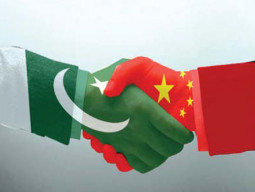
Does the target audience of Pakistan’s microfinance banks have the financial literacy to understand, and benefit from, products and services that are on offer?
According to the results of a financial literacy gap assessment survey released in January, over 50% of Pakistanis keep their savings at home while 47% say they have never needed a bank account. The survey, which was conducted with the help of the Pakistan Microfinance Network (PMN), also revealed that 22% of the respondents said they did not know the main benefit of investing money.
However, microfinance bankers disagree. They contend that their customers know the business pretty well.
“It’s a misconception that our small businessmen aren’t financially literate. Someone who runs a roadside stall understands his business much better than we do. He may not have a sound financial plan, but he surely knows his cash flows and accounting,” said Tameer Micro Finance Bank (TMFB) President Nadeem Hussain while talking to The Express Tribune.
“Having said this, there is a need to educate the customer about best saving practices, e-mandi and insurance of health, crops and livestock,” said the president of the TMFB – the second largest provider of microcredit in Pakistan with a market share of 15.8%.
He said the gross loan portfolio of the TMFB was likely to reach Rs5.1 billion by the fourth quarter of 2011, whose figures the PMN has yet to release officially. “That’ll make the TMFB the largest provider of microcredit in Pakistan,” he added.
Currently, Khushhali Bank is the largest microfinance bank in terms of the number of active borrowers as well as the gross loan portfolio. There are seven operating microfinance banks in Pakistan besides nine microfinance institutions providing specialised microfinance services.
Rejecting the accusation that microfinance banks rip off people belonging to the underprivileged section of the society by charging exorbitant interest rates, Hussain said the rate of returns were in line with international and local practices.
“People ask why we charge over 30% when the going interest rate is 18%. But they forget that this rate is offered to the corporate sector. See the mortgage rate, which is 28%. The rate is over 35% for credit cards. You can’t compare apples and oranges.”
Hussain said the effective rate of interest that the TMFB charged its customers was about 32%. Giving the breakdown, he said the cost of funds, which is the interest rate that a financial institution pays for the funds it deploys in its business, was about 12%-13%. The cost of administration is 13%-15%, he said, adding that the return for the TMFB was about 3%-4% after taking into account the loss provision of 2%.
“Our cost of administration is quite low even when compared to that of the Grameen Bank, which is about 12%,” he added. Grameen Bank was founded by Muhammad Yunus who won a Noble Peace Prize for his successful microcredit programme in Bangladesh.
The industry-wide average loan size is Rs20,238. However, Hussain says the average loan size at the TMFB is twice the industry-wide average and the payback rate is also better than the industry-wide average.
“Customers of microfinance pay back on time because they want to stay away from the aarhti (a non-institutional moneylender), who charges a 300% interest rate. They want to create a credit history for themselves to expand their businesses,” Hussain said.
Published in The Express Tribune, March 14th, 2012.


















COMMENTS
Comments are moderated and generally will be posted if they are on-topic and not abusive.
For more information, please see our Comments FAQ